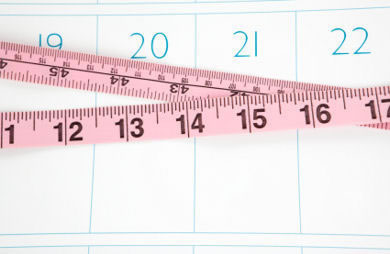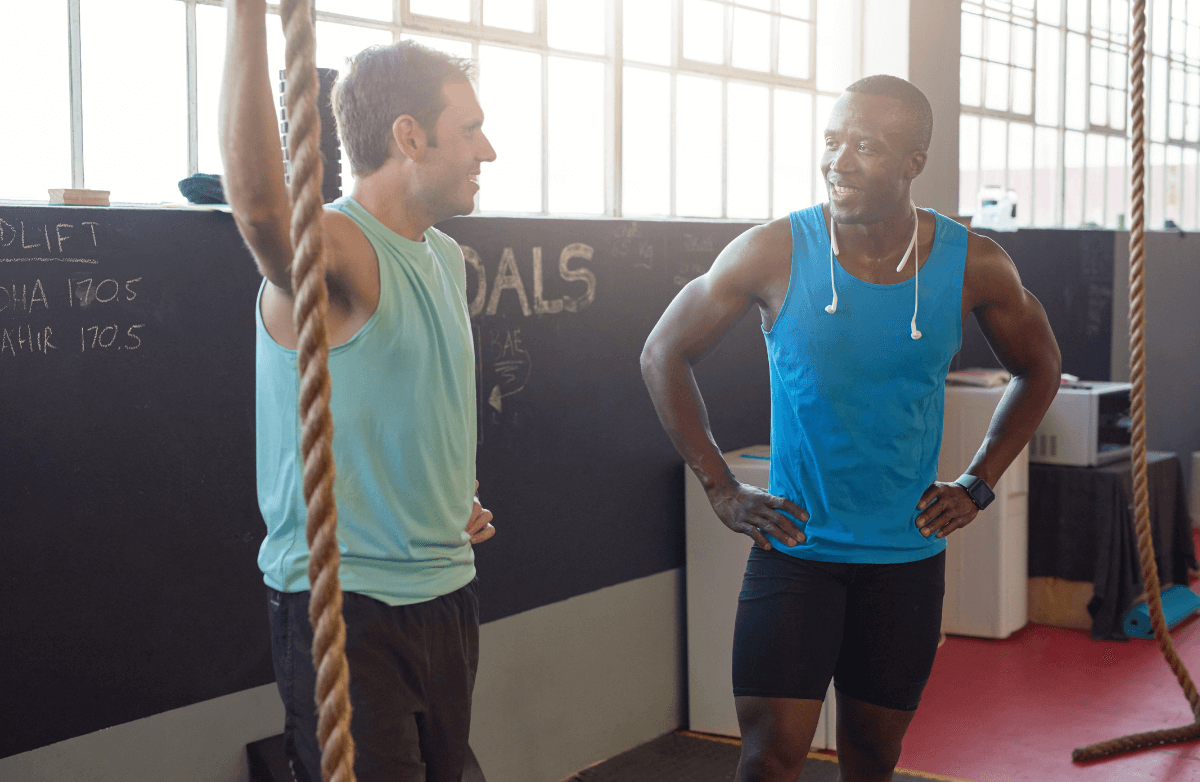When done properly, strength training provides a wide variety of physical benefits—including improving muscle definition, strengthening bones and increasing strength—regardless of age or fitness level. When done improperly, however, it increases risk of injury and can become frustrating due to lack of results.
According to physical therapist Tanya Kist, most of the strength training injuries she sees are due to improper lifting techniques. "The most common reason for injuries when working out is not keeping proper form and spine alignment. I also see people trying to lift too much weight without proper form," she says. "When you stand with your back against the wall, we all have a natural curve, often called the neutral spine. When working out, you want to maintain this neutral spine during strengthening exercises. Wearing a weight belt is another way to support your back."
In a perfect world, a personal trainer or other fitness expert would check your form during each exercise, making adjustments and confirming that you're doing every move exactly right. Unfortunately, we don't all have access to these professionals, especially if you prefer exercising in the privacy of your home. How, then, can you know that you're performing various exercises safely and correctly? Is it possible to be successful and safe when lifting weights on your own? Of course!
Check In With Your Body
By paying close attention to how you're feeling and the signals your body is giving, you can make adjustments to maximize results and minimize injury. There are eight simple questions you can ask yourself to check your form, no
- Do I feel the contraction of the muscles that are supposed to be working? Before you start any new exercise, be familiar with the primary and secondary muscles it works. Primary muscles control the movement, while secondary muscles assist in the movement. For example, a squat primarily works your quadriceps, but you should also feel it in your hamstrings and glutes. If you don't feel these muscles working or have discomfort, pain or pressure in other areas (such as the lower back or knees, in the case of a squat), stop and check your form. The American Council on Exercise has a great exercise library with demonstrations of a wide variety of moves, as well as descriptions of how to do them correctly and which muscles they work.
- Does anything hurt? While strength training isn't going to be comfortable and will sometimes feel like hard work, it should never hurt. Pain is your body's way of telling you something is wrong. If you feel pain or excess pressure in your joints or anywhere else in your body, it's likely that you either aren't using the right amount of weight, or you're doing the exercise incorrectly. Learning the difference between discomfort and pain will save you from an improper form mistake that could end in injury.
- Am I maintaining good posture? Proper posture puts your body into proper alignment. To check your posture, try this test: When looking from the side, you should be able to draw an imaginary line from your earlobe through the tip of your shoulder, midway through your hip, knee and finally down through the ankle. Any deviation from this alignment sets you up for injury. Although there are a few exceptions, most exercises require a flat back, with no swinging back and forth. Kist also recommends stretching after exercise to help prevent injuries and increase flexibility, especially in the hamstrings. "The hamstring muscles play an important role in our posture; [they assist] in straightening out the lower curvature of the spine," she says.
- Am I breathing? Ideally, you want to exhale during the exertion phase of the exercise and inhale as you come back to the starting position. For example, when performing a chest press, you'd exhale when you push the weight up and inhale as the weight comes back down. If you find it too difficult to think about those specifics during your workout, the most important thing is that you don't hold your breath. Holding your breath raises your blood pressure, and also tightens the neck and shoulders. This tightening makes proper form more difficult.
- Have I asked anyone else to check my
form ? Especially when doing an exercise for the first time, it's a good idea to ask someone else to watch and make sure you're doing it correctly. If you belong to a gym, take advantage of a personaltraining consultation or ask a staff member or trainer for help. If you're at home, ask a friend orfamily member to watch (after you've explained how to do it properly, of course) to serve as an extra set of eyes to look for any breaks in your form. Once you have a feel for the proper motion, you'll be more likely to notice those breaks on your own. - Am I watching myself do the exercises in a mirror? There is a reason the walls of most gyms are lined with mirrors—and it's not so you can make sure you look nice. A mirror is a useful tool to check your form during strength (and even cardio) exercises. Many times you'll instantly see improper form even if you can't necessarily feel it. A word of caution, though: Make sure shifting your gaze to watch yourself doesn't take your body out of proper alignment, since you can't easily look in the mirror during all exercises.
- Am I using the right amount of weight? The last repetition in a set should be the last one you can physically do in good form. If you are doing a set of 12 reps and can't get close to 12 without struggling to maintain your form, the weight is too heavy. If you're trying to lift too much weight or you're doing too many repetitions, proper form becomes very difficult. Make sure you aren't straining your neck, arching your back or rocking back and forth in order to lift the weight. It's better to decrease the weight and do the exercise correctly, versus risking injury by lifting too much.
- Am I using proper range of motion? Full range of motion, the full movement potential of a joint, is one of the factors that contributes to proper form. Research demonstrates that using full range of motion while strength training is the most effective way to gain muscle strength and size. The strength of your tendons, ligaments and muscles is determined by the amount of stress placed on them. Using
full range of motion during strength exercises puts "good" stress on them, which decreases the risk of injury.









.png)



